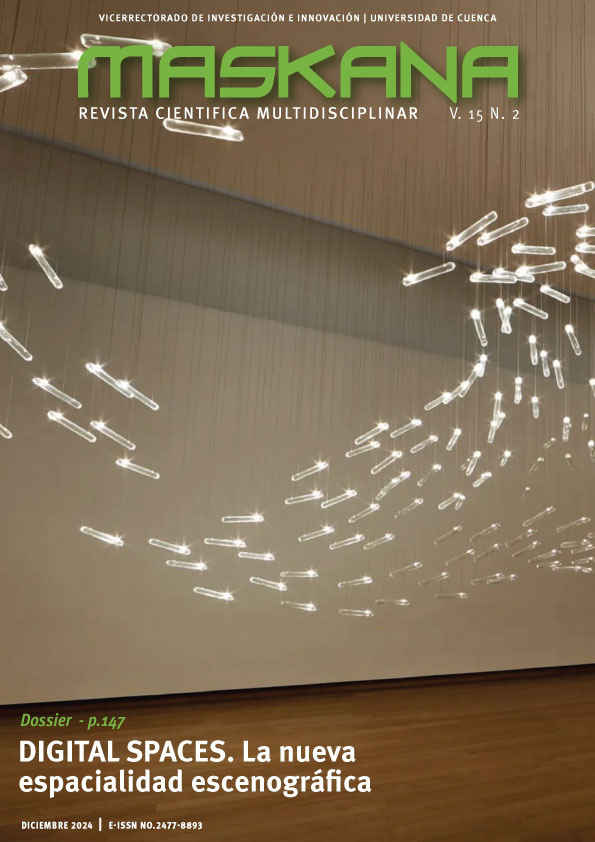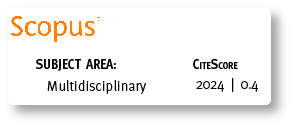Melipillan Heritage Portrait Project. Recording cultural heritage through community participation
DOI:
https://doi.org/10.18537/mskn.15.02.01Keywords:
Heritage portrait, vernacular heritage, heritage valuation, peasant culture, heritage territorialityAbstract
The objective of the project “Melipillano Heritage Portrait” was to recognize the cultural heritage of the commune of Melipilla (Chile), through a registry of assets, in order to raise awareness among the different local actors regarding the values of this invisible cultural heritage, through qualitative and quantitative techniques. It aimed to obtain a relevant and operational input for the valuation and recovery of heritage through the systematization of the information collected in six community workshops, from three categories of analysis: material, intangible and cultural landscape. The research demonstrated the lack of protection of the local heritage and identity, which is limited to a perception that does not reflect the diversity that constitutes it, focusing on only two representative cases (Pomaire and Melipilla) and leaving aside other villages that coexist in this territory, which are also an interesting resource to recognize and preserve as an expression of the cultural heritage of the peasant community.
Downloads
Metrics
References
Elgueta, Edelberto (1981) Dos puertas abiertas de la historia de Pomaire: época preincasica a 1975. s/i.
Feria, J. M. (2010). Patrimonio territorial y desarrollo sostenible: un estudio comparativo en Iberoamérica y España. Estudios Geográficos, LXXI (268), 129-159. http://dx.doi.org/10.3989/estgeogr.0472
FUCOA (2017). Greda Viva. Editorial CNCA.
Hermosilla, J. e Iranzo, E. (2004). El patrimonio rural como factor de desarrollo endógeno. Saitabi, (54), 9-24. Recuperado de https://ojs.uv.es/index.php/saitabi/article/view/6188/5945
Hermosilla, J. y Mayordomo, S. (2016). Sistema metodológico de evaluación del patrimonio hidráulico. Valencia: Tirant lo Blanch.
Hernández, M. (2017). Recomposición de las relaciones ciudad-campo: agriculturas periurbanas, calidad, seguridad y democracias alimentarias. En F. Allende, R. Cañada, G. Fernández-Mayoralas, G. Gómez, N. López, A. Palacios, F. Rojo y M. J. Vidal (Eds.), Naturaleza, territorio y ciudad en un mundo global. XXV Congreso de la Asociación de Geógrafos Españoles (pp. 1336-1351). http://dx.doi.org/10.15366/ntc.2017
Iranzo, E. (2009). El paisaje como patrimonio rural. Propuesta de una sistemática integrada para el análisis de los paisajes valencianos (Tesis doctoral). Universitat de València. Valencia.
Kiraj, L., Godoy, S., Matta, P. y Valdés. (1986). Loceras y trabajadoras de la arcilla en Pomaire. CEM.
Leal René, María Angélica Villaseca y Carolina Duque (2013) Identidad Cultural de Pomaire. Universidad de Los Lagos, Santiago.
Manero, F. y García, J. L. (2016). Cultura, patrimonio y territorio. En F. Manero y J. L. García (Coords.), Patrimonio cultural y desarrollo territorial (pp. 17-20). Navarra: Aranzadi.
Martínez, E. y Escribano, J. (2019). La complejidad de la gobernanza del patrimonio inmaterial en el medio rural: el caso de «Els Pelegrins de Les Useres». Cuadernos Geográficos, 58(2), 194-214. http://dx.doi.org/10.30827/cuadgeo.v58i2.7545
Mayordomo Maya, S., & Hermosilla Pla, J. (2020). Propuesta de un método de evaluación del patrimonio cultural y su aplicación en Cortes de Pallás (Valencia). Investigaciones Geográficas, (73), 211-233. https://doi.org/10.14198/INGEO2020.MMHP
Municipalidad de Melipilla (2010). Historia de Melipilla. I. Municipalidad de Melipilla.
Municipalidad de Melipilla (2018) Melipilla: armonía del hombre y la tierra. I. Municipalidad de Melipilla, Melipilla.
Musri, L. (1999). Melipilla te cuento. Editorial Huilco.
Ortega, J. (1998). El patrimonio territorial: el territorio como recurso cultural y económico. Ciudades. Revista del Instituto Universitario de Urbanística de la Universidad de Valladolid, (4), 33-48. Recuperado de http://iuu.uva.es/REVISTA/Ciudades%2004/Ciudades%2004%20033-048%20ORTEGA%20VARCARCEL.pdf
Pérez, A (1976). La artesanía de Pomaire: aspectos económicos y sociales. Policopia.
Pinaud, E. (1983). La cerámica tradicional de Pomaire. [Memoria no publicada]. Facultad de Artes, Universidad de Chile.
Porcal, M. C. (2011). El patrimonio rural como recurso turístico. La puesta en valor turístico de infraestructuras territoriales (rutas y caminos) en las áreas de montaña del País Vasco y de Navarra. Cuadernos de Turismo, (27), 759-784. Recuperado de https://revistas.um.es/turismo/article/view/140211
Tapia, I y Santander, M (2002). Pasado y presente de Pomaire. Greda e imaginación. Editorial Génesis.
Valdés, Ximena y Paulina Matta (1986) Oficios y trabajos de las mujeres de Pomaire. Editorial Pehuén/CEM, Santiago.
Valenzuela, Bernardo (1955) La cerámica folklórica de Pomaire. Universidad de Chile, Museo Histórico Nacional, Santiago.
Vera, Raquel (1953) Cerámica de las Monjas, Pomaire y Talagante. Tesis de Grado, Universidad de Chile, Santiago.
Published
How to Cite
Issue
Section
License
Copyright (c) 2024 José Marcelo Bravo sánchez, Patricio Hernán Duarte Gutiérrez

This work is licensed under a Creative Commons Attribution-NonCommercial-ShareAlike 4.0 International License.
Copyright © Autors. Creative Commons Attribution 4.0 License. for any article submitted from 6 June 2017 onwards. For manuscripts submitted before, the CC BY 3.0 License was used.
![]()
You are free to:
 |
Share — copy and redistribute the material in any medium or format |
 |
Adapt — remix, transform, and build upon the material for any purpose, even commercially. |
Under the following conditions:
 |
Attribution — You must give appropriate credit, provide a link to the licence, and indicate if changes were made. You may do so in any reasonable manner, but not in any way that suggests the licenser endorses you or your use. |
| No additional restrictions — You may not apply legal terms or technological measures that legally restrict others from doing anything the licence permits. |









